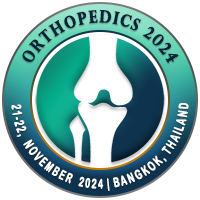
Bao Tu Thai Nguyen
The International Graduate Program in Medicine, TaiwanTitle: Correlation between red blood cell distribution width and mortality risk following hip fracture – A meta-analysis
Abstract
Introduction: Hip fractures in elderly individuals are a severe health concern. Red blood cell distribution width (RDW) is discovered to help identify high-risk patients with aging-related mortality and various disorders and diseases. However, its correlation with adverse patient outcomes following hip fractures remains to be determined. Therefore, this meta-analysis was conducted to understand better the correlation between RDW levels and mortality risk after hip fractures.
Materials and Methods: Relevant studies were searched from PubMed, Embase, Web of Science, and other sources until April 2023. Observational studies demonstrated the correlation between admission or preoperative RDW level and short- and long-term mortality rate following hip fracture were included. The results were shown with odds ratio (OR) or hazard ratio (HR) and 95% confidence intervals (CIs).
Results: This study included ten cohort and case-control studies involving 5834 hip fracture patients. Patients having preoperative RDW levels over 14.5% were more likely to be mortal at one year (OR: 5.40, 95% CI: 1.89-15.48, p = 0.002) and three months (OR: 2.91, 95% CI: 1.42-5.95, p = 0.004. Higher admission or preoperative RDW levels were significantly associated with an 11% higher mortality risk at over-1-year follow-up (HR: 1.11, 95% CI: 1.05-1.18, p = 0.0007). Patients having higher preoperative RDW levels show a significant increase of three times in the mortality risk at six months (OR: 3.00, 95% CI: 1.60-5.61, p = 0.0006). In the 30-day follow-up, higher preoperative RDW levels increased the death rate (OR: 6.36, 95% CI: 3.28-12.33, p < 0.00001).
Conclusions: Greater variability of red blood cell volume at admission or preoperation increases the risk of death following hip fractures in both the long and short term. Because RDW can be easily obtained from a routine blood test at a low cost, this parameter can be used to predict mortality in hip fracture patients.
Biography
Mr. Bao is an orthopedic lecturer and surgeon from a university in Can Tho city, the capital of South Vietnam. He is eager to improve and enhance the management and multidisciplinary care for trauma and orthopedic patients in his area. He believes that his patients will be able to receive creative and effective treatment. He worked at his university's orthopedic center after obtaining his bachelor's degree in medicine, specializing in hip and knee procedures and senior fracture care. He is now pursuing a Ph.D. at Taipei Medical University in Taiwan, where he is conducting research on predicting bad outcomes following hip fractures and optimizing perioperative treatment for advanced-age patients. With so many opportunities to learn and research, he hopes to add his findings to orthopedic knowledge, which will assist in improving the quality of trauma and orthopedic patient care.

